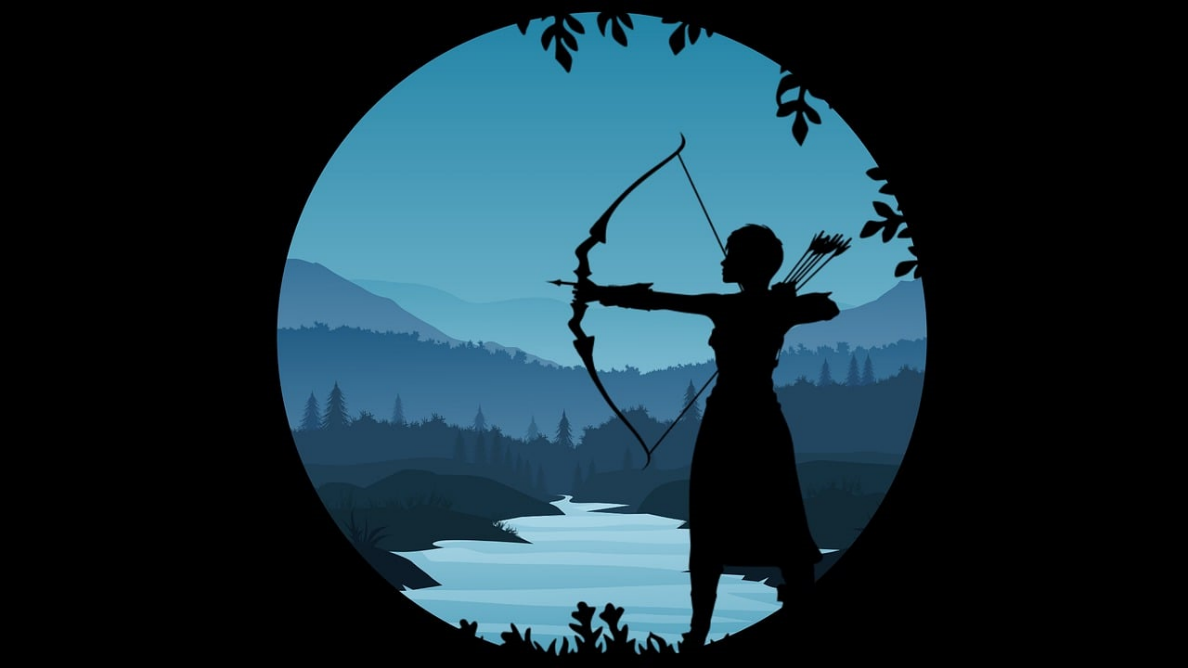Men hunt and women gather? Large analysis says the long-held idea is flat-out wrong
Scientists studying hunter-gatherer societies around the world discovered the stereotypes that men were hunters and women were gatherers was wrong.

It's long been assumed that men were hunters and women were gatherers, but a new study reveals that both sexes have been equally adept at hunting in hunter-gatherer cultures.
An international team of scientists made the finding after examining data culled from dozens of academic papers, published over the past 100 years, that focused on 63 hunter-gatherer societies and burials of female hunters from around the world, including groups in North America, Africa, Australia and Asia, according to a study published Wednesday (June 28) in the journal PLOS One.
"We were reading papers written by people who had lived with these groups and had studied their behavior," study co-author Cara Wall-Scheffler, a professor and co-chair of biology at Seattle Pacific University, told Live Science. "They were looking at people and recording what they did."
Of the foraging communities assessed, 79% contained women who were hunters, and their hunting status didn't shift once they became mothers.
"The women would go out with many different tools — they had a very diverse tool kit all around the world — and if they saw an animal, they would kill it," Wall-Scheffler said. "We were surprised by how the majority of groups showed women hunting, and there was no explicit taboo against that."
The researchers also noted that more than 70% of female hunting expeditions were classified as "intentional," meaning the women purposefully went out seeking meat, as opposed to engaging in opportunistic killings, in which they encountered animals while doing other tasks, such as foraging for plants, according to the study.
Most of these female hunters were "purposely hunting and going out to expressly hunt animals," Wall-Scheffler said. "We were surprised that it wasn't just opportunistic. Everyone in their community knew they would go hunting, and that was their job."
Related: 'Ghost footprints' left by ancient hunter-gatherers discovered in Utah desert
Sign up for the Live Science daily newsletter now
Get the world’s most fascinating discoveries delivered straight to your inbox.
Furthermore, female hunters weren't hunting and trapping only small game, such as birds and rabbits. Rather, they were equal to male hunters when it came to big-game hunting in the Americas, making up roughly 50% of hunters targeting large animals such as deer and moose, according to the study.
"We reanalyzed the big-game burials from North and South America [in which people were buried with tools or animal bones], and prehistorically showed that women and men were 50/50 big-game hunters," Wall-Scheffler said.
So, who's to blame for the erroneous idea that men were hunters and women were gatherers?
Wall-Scheffler mentioned two books that likely helped solidify the idea: "Man the Hunter" (Aldine, 1968), based on a symposium of ethnographers, and a second book released 15 years later, titled "Woman the Gatherer" (Yale University Press, 1983).
"The purpose of [the second] book was to say, 'Fine, men are hunting, but actually, hunting is not a great way to bring in calories because it's very inconsistent,'" Wall-Scheffler said. "Because it's so inconsistent, males may be doing it — but they're not actually providing for the females, since females were bringing in their own food and they're totally fine because they were also always gathering.
But the books ended up creating "more rigid gender roles in which men were hunting and women were gathering and never the twain shall meet — and that has stuck around," she added. "It doesn't make sense that if something like hunting for animals would help feed their community, that women would ignore it. Having these rigid divisions of labor wouldn't make sense."
Jennifer Nalewicki is former Live Science staff writer and Salt Lake City-based journalist whose work has been featured in The New York Times, Smithsonian Magazine, Scientific American, Popular Mechanics and more. She covers several science topics from planet Earth to paleontology and archaeology to health and culture. Prior to freelancing, Jennifer held an Editor role at Time Inc. Jennifer has a bachelor's degree in Journalism from The University of Texas at Austin.









